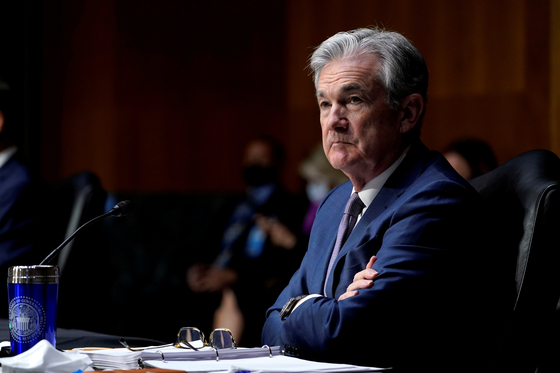![Jerome Powell, chairman of the Federal Reserve System (Fed), waits and sees with his arms folded. The picture was taken when he attended the US Congress on December 1st last year. [로이터=연합뉴스]](https://i0.wp.com/pds.joins.com/news/component/htmlphoto_mmdata/202103/05/6b486d57-b0fe-4009-8175-98b74081ce76.jpg?w=560&ssl=1)
Jerome Powell, chairman of the Federal Reserve System (Fed), watches with arms folded. The picture was taken when he attended the US Congress on December 1st last year. [로이터=연합뉴스]
The US’ Priest of the Dollar Shrine (Chairman of the Fed)’ also failed to calm the treasury market unrest. Market participants are keenly keen on whether emerging markets such as Korea will be shocked in 2013.
[Global Money]
10-year yield rises immediately after Powell’s remarks
Because the market did not come up with the expected measures
In 2013, stocks in emerging countries stagnated for a long time.
On the other hand, recently, the current account and other physical strength have been good.
On the 4th (local time) in the US government bond market, the 10-year yield (market interest rate) rose sharply from around 12:00 noon. The market interest rate has exceeded the 1.5% per annum. At 5 pm that day, it finally reached the 1.55% level. The rate of return once exceeded 1.6% last week.
Powell, likely to watch government bond yields rise
Fed Chairman Jerome Powell said at an online economic conference held by the Wall Street Journal (WSJ) on the point that “the recent market interest rate is not so chaotic that it has to curb volatility.”

The flow of 10-year US Treasury bond yields over the past five days. unit: %
Powell’s remarks were interpreted as a willingness not to come up with the’measures’ the market expected. Eventually, participants in the government bond market increased their selling of bonds. The yield rose noticeably.
Nasdaq returns this year’s increase
The aftermath immediately spread to the risky asset (stock) market. The Dow index slipped 1.11%, the Standard & Poor’s 500 index slipped 1.34%, and the Nasdaq slipped 2.11%.
As a result, concerns have been amplified that 2013, when the 10-year US Treasury bond yield exceeded 3% a year in 6 to 7 months, could be repeated. At the time, concerns over quantitative easing (QE) reduction in the US Treasury bond market grew, and sales volume poured out.
At the time, the shock hit the emerging markets even harder. That year, stock prices in the United States and other countries fell temporarily. But soon it was on a recovery trajectory. On the other hand, emerging markets (the gray line in the graph) remained stagnant.

Global share price flows around 2013 when the US Treasury market fluctuated. Purple: MSCI US Index, Black Line: MSCI Global Index Excluding US, Gray Line: MSCI Emerging Countries Index. The purple box is a period of soaring US Treasury yields.
Stronger than 2013 in emerging countries
However, Capital Economics (CE), an economic analysis firm in the UK, said in a report that day, “Emerging economies are better than 2013 in 2021. It is unlikely that US Treasury yields will rise as steeply as in 2013, but even if it rises, it will hit stock prices in emerging markets. It is expected that the impact will not be great.”
In particular, only a few of the emerging countries have a current account deficit. In addition, the currency value of emerging markets is lower than the 2013 level.
However, Turkey, Romania, and Colombia have a large current account deficit, which could be shocked by the departure of foreign capital, CE predicted.
Gold is below $1700
Meanwhile, crude oil prices rose sharply in the commodity market on this day. The US Western Texas crude oil (WTI) price jumped about 4%, exceeding the $63 per barrel level.
On this day, WTI’s price is the highest in almost two years since April 2019. This is because OPEC+, a group of major oil exporting countries, decided to maintain the current level of production in April, including voluntarily reducing production of 1 million barrels per day in Saudi Arabia.
On the other hand, international gold prices fell below the $1700 per ounce (31.1g) mark. It has slipped to its eight-month low since July of last year.
Reporter Kang Nam-gyu [email protected]
![]()
